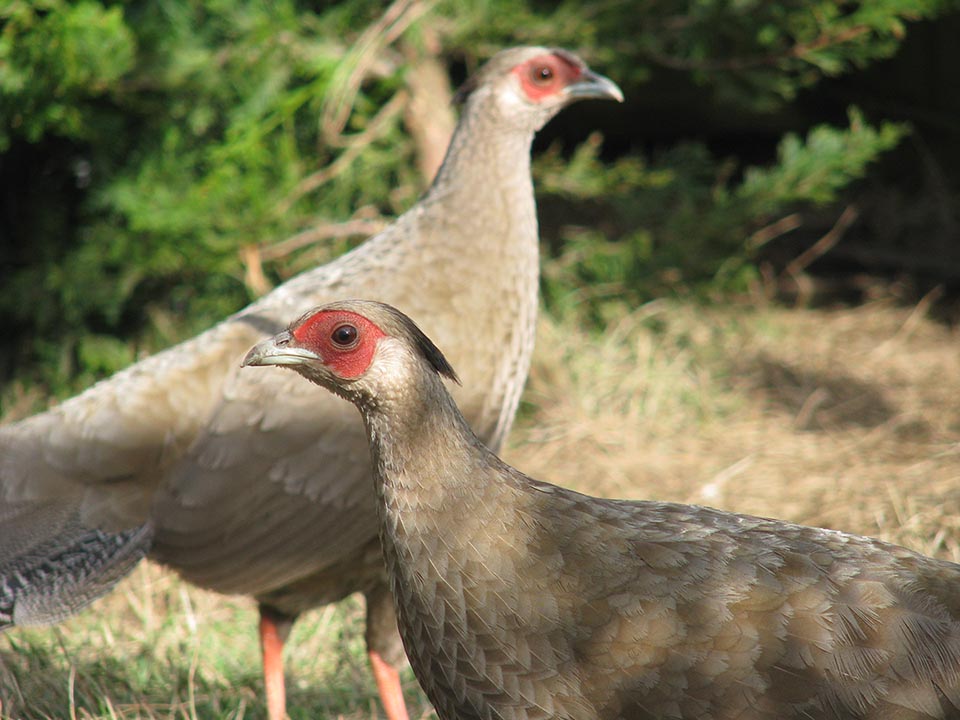

The True Silver Pheasant originates mainly from South East China. This is the nominate race and has 14 subspecies. It is also very closely related to the Kalij Pheasant with which it will hybridise.
The cock True Silver Pheasant is a striking bird. The bottom half of this bird is a glossy black with the top half being white laced in black. It also has a long bushy black crest which lies backwards across the head rather than vertically. The face wattles and legs are red and he has a long curved tail. The hen is a medium brown with some black & white streaking on her underparts. She also has a crest although this is not as big as the one on the cock and is brown with black at the tip. The True Silvers are larger than the other subspecies and the tail is longer. The male weighs 3 - 4 lbs (approx. 1.3 - 1.8kg) and the hen around 2.5 lbs (1-1.2kg).
Our Silver pheasants enjoy a mixed diet similar to our other birds. The main part of their diet is Marsdens game pheasant pellets. They also like fruit and enjoy a variety of live food. They will tuck into crickets, spiders, locusts and waxworms as well as the usual mealworms.
Silver Pheasants are polygynous in the wild and are sometimes kept with a few hens to one cock in captivity. Silver pheasants should be kept in an aviary at least 200 square feet. This will need to be larger for more than three birds.
Silver pheasants will sometimes breed successfully in their first year but more often they will be into their second before they are fertile. The cock will also colour up fully at two years old. The hen will lay a clutch of 6 - 12 eggs but can continue laying up to as many as 30 - 40 eggs if they are removed from her nest which is a hollow scraped in the ground.
We have found the chicks easy to raise. They feed well, only occasionally needing encouragement to start eating their crumb. They have also been quite amicable with other chicks and easily become tame.
The cocks can sometimes become aggressive to their keepers. We have kept Silvers now for eleven years now and luckily so far we've not had any of them become aggressive with us (or their mates for that matter), but they do have a bit of a "bad boy" reputation. They are certainly not fearful and spend plenty of time displaying but that's a definite bonus for me. They are stunning birds that are hardy, easy to care for and full of character.